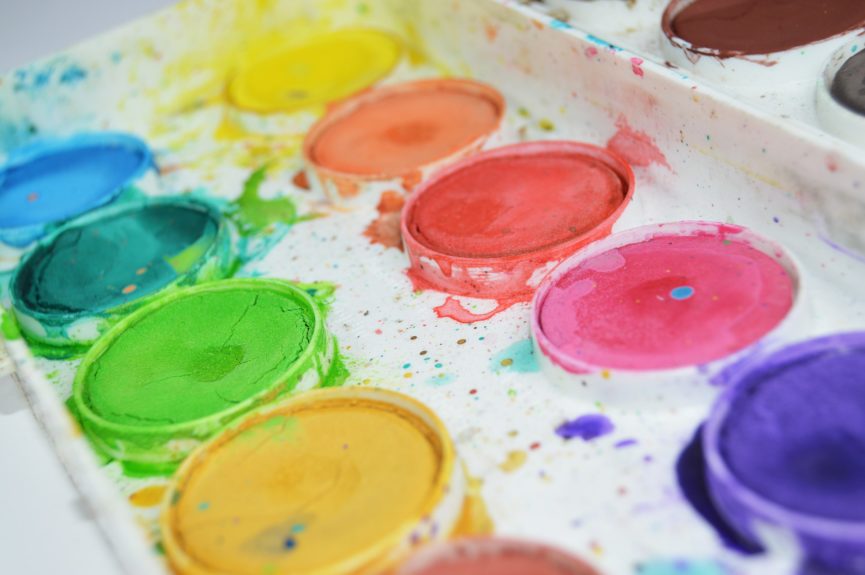Mindfulness in Education
After four months of trying to support my new preschool class into settling into a new routine, I was ready to quit. No matter what I did, from modelling positive responses, to positive reinforcement, to comforting words and embraces when major meltdowns erupted, nothing seemed to work. Since the long-ago start of the academic year, there had been sobs, bites, spits, runaways and oppositional behaviour antics. As much as I tried to balance these occurrences with positive events, school days always felt like they had descended into chaos with little, if any, tangible learning obtained.
The support department at my school was busy with other key cases as a dozen staff members served about 400 students. Aside from observations here and there by professional specialists to determine the needs of this class, I felt like I had been left to find a solution on my own – perhaps magic.
See, I’ve worked in early years education for over a decade, with experience across the spectrum: mainstream primary schools, special needs schools, children’s centres, and now an international school. And while each year I eagerly welcomed new families and new sets of unique human beings to teach and learn from, the academic year of 2016/17 would prove transformational.
Yes, my class was one-of-a-kind, and some students required a teacher with a skillset that went beyond what I had gained during my academic training and professional journeys. They called for skills I had developed way into adulthood, such as readiness to delve deeper in order to educate the whole child. Something I was only able to achieve through unreserved presence and awareness — what I call mindfulness.
I was first introduced to mindfulness in 2014…
…by long-time practitioner Bora Rancic, who had used mindfulness to support his adolescent students in dealing with their often tempestuous years. What began as a random chat with Bora turned into weekly sessions alongside a personal daily practice. My co-workers began to show interest in mindfulness practices for self-care and to apply it with their students. You can’t deny that teaching is a challenging profession, particularly in early childhood when students are developing a sense of self and learning to be part of a wider group outside their immediate family.
Bora’s commitment to helping the Early Learning Centre teachers grow in mindfulness resulted in a stronger sense of wellbeing for many of us. Some enjoyed it; others couldn’t “keep up”, but nevertheless all made the most of sessions, and the seeds of a more mindful life (professionally and personally) were planted.
So, when I was almost ready to give up on the profession I’d dreamt of since I can remember, something in me wondered: why not apply the mindfulness techniques I’d learned over the past few years to assist students who needed help at self-regulating their emotions and impulsivity?
When I fully ‘listened’ to my students and what their actions communicated, I stopped dutifully teaching the curriculum. Instead, I became openly and intentionally present in each moment, not only teaching but learning from my students too. That’s when true change became possible.
I was finally prepared to get creative…
…not giving up on my students without giving it my all. As a class, we revamped our classroom learning spaces so children could free-flow from area to area without any major restrictions. We also created a quiet space called the “mindful corner”, where children could visit whenever they needed respite, time to reflect, or to listen to child-friendly meditations.
What’s more, instead of diving straight into inquiry time each morning, we began our days with a ‘mindful minute’. Using the IB Learner Profile Attributes, children chose individual intentions for the day—for example, being Caring: “I will use kind hands with my friends”; or a Communicator: “Today I want to listen during story time”. Then we’d set up a group intention for all. Children loved this because it gave them agency on how to act and interact with their peers and the adults around them. We also started holding weekly mindfulness sessions dedicated to topics that were meaningful to the children and which promoted a balanced lifestyle. For example, investigating how emotions manifest in our bodies, and how communication is affected by how we feel.
Mindfulness became part of our daily experiences in the classroom
The children began to embody it in all that they did. They developed their own mindfulness breathing techniques in original and imaginative ways. During meal times, they told one another to “eat mindfully” as if to say, “pay attention to what you are doing right here, right now.” Mindfulness enabled us to come together and create a learning environment where harmonious relationships could develop and be nurtured.
From this life-transforming experience, I learnt that the most important thing to do when things aren’t going in the direction you had foreseen is to simply pause, breathe and … proceed, knowing that you have tried your very best in all that you do.
Mindfulness lives in all of us, and as an educator I believe there needs to be a bigger focus on purposefully developing children’s social and emotional needs if we truly aspire to educate well-rounded human beings. Only then will we give children the tools they truly need for healthier minds and bodies, so they can learn to navigate the stream of life. So, why not use mindfulness as an educational tool? The evidence is loud and clear.
Catarina has published Golden Sparkles: An Introduction to Mindfulness to honour her 2016/17 class and their mindfulness journey together. For more information, visit www.catpeterson.co.uk
